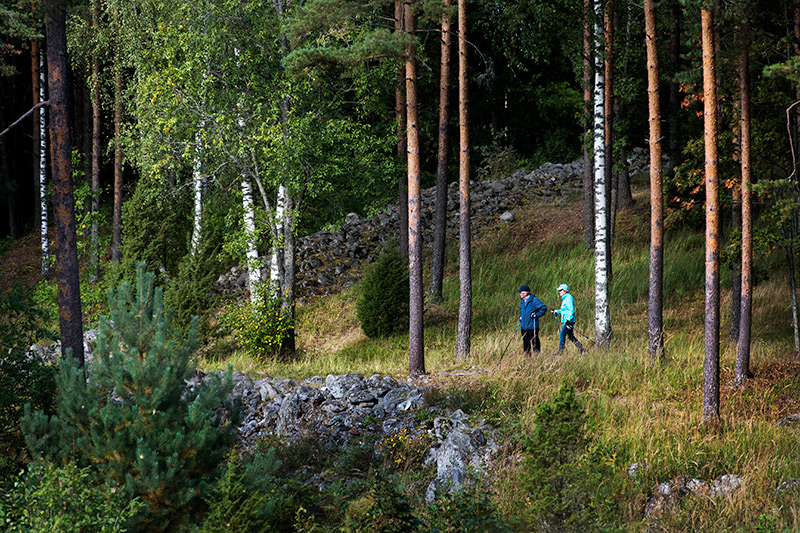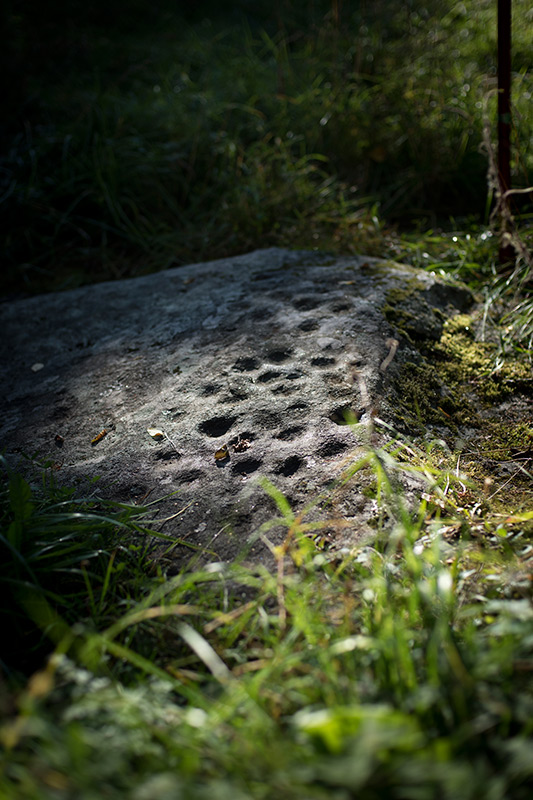The hill fort of Rapola – the largest ancient hill fort in Finland (Finland)
The hill fort of Rapola in Valkeakoski is the largest in Finland. The top of the hill is surrounded by the remains of a wall which once supported a wooden palisade. At the foot of the hill are ancient sites and monuments such as ancient fields, settlement sites, sacrificial stones and cemeteries. The hill fort and the magnificent views from its summit have inspired several artists.
The hill of Rapolanharju overlooks the water landscape of Lake Vanajavesi in the midst of the crop fields of the ancient province of Häme. Sitting 70 meters above the lake, the stronghold on the hilltop is part of a long string of hill forts along the shores of Lake Vanajavesi. When enemies still threatened local settlements, these strongholds offered places of refugee for the inhabitants of local villages.
The top of Rapolanharju hill is surrounded by a wall almost 1 kilometer long and consisting of the remains of a wooden palisade and other fortifications. The stronghold dates back to the Iron Age and may also have been used during the Middle Ages. Inside the wall are two large depressions with slopes covered by pits which are thought to be the remains of rudimentary houses. The lack of weapons found at the site suggests that few battles were fought there. The ancient stronghold was still remembered in 1640 when the land surveyor Laurentius Schroderus mapped the surrounding villages and marked the hill as the remains of an ancient fortification.
Fertile land tempted people to Rapola during the Iron Age
The fertile slopes at the foot of the hill were cleared during the Iron Age and sedentary settlements date back to at least the period of Migration (AD 400–600).Numerous burial cairns survive from that era in two cemeteries known as Hirvikallio and Matomäki. The cairns were used for sacrifices in the succeeding centuries. Between the cairns were small fields – in fact the first ancient field to be rediscovered in Finland, in the 1980s, was located in Matomäki. In Hirvikallio there is also a sacrificial stone covered by several small cups. At least three other sacrificial stones can be found in the nearby area.
During the Merovingian Period (AD 600–800), burials were held in the cremation cemetery of Rupakallio in Rapola. Weapon finds from the neighboring village of Voipaala indicate an inhumation cemetery dating back to the Viking Age (AD 800–1000). As an exception to discoveries made in other local villages, no inhumation graveyards have yet been found in the village of Rapola.
During the Middle Ages two villages, known as Rapola and Voipaala, sprang up at the foot of Rapolanharju hill. Together with neighboring settlements, they formed a key site in Häme during the Late Iron Age and the Middle Ages, to which the medieval church of Sääksmäki still bears testimony. The people of Häme were baptized and became Christians during the 13th century, when the first wooden church was built in the parish of Sääksmäki. In around AD 1,500, the old wooden church was replaced by a stone church built hundreds of meters from the hill fort.
The importance of the peasant settlement in Häme during the Middle Ages was demonstrated in 1340, when the Pope signed an interdict in Avignon, France. He threatened to forbid the people of Sääksmäki from participation in religious services before they resumed paying their tithes. Among the more than 20 peasants named in the bullae was a certain Cuningas de Rapalum. In the early 20th century in particular, his name inspired stories about the stronghold of Rapola and a King (Finnish: kuningas) who ruled over the surrounding lands from there. We now know that Cuningas was a first name among Finns. However, Mathias de Rapalum, whose name appears first on the list, may have been some kind of leader in the parish.
Manors, culture and art in the national landscape
During the 17th and 18th centuries, two manors were established at the foot of the ancient hill fort. Estates now dominated a landscape formerly characterized by peasant farms. The current main buildings of the Rapola and Voipaala manors are around one hundred years old.
From the 19th century, the magnificent views and fascinating past of Rapolanharju and the hill fort upon it have attracted both tourists and artists to the site. The hill fort and its surroundings have gradually become part of the national landscape and now symbolize this area at the heart of the province of Häme.
Photos: Metsähallitus/Elias Lahtinen







